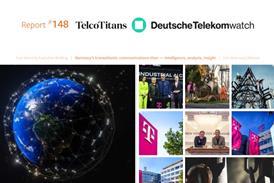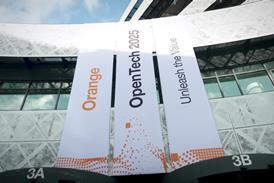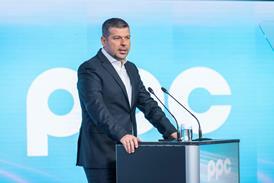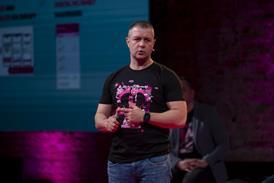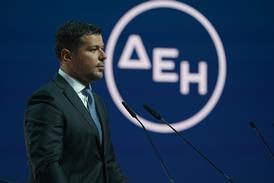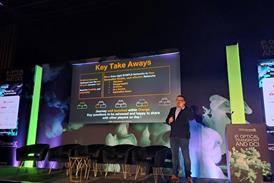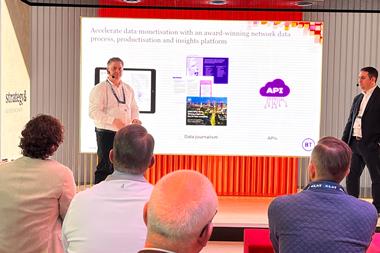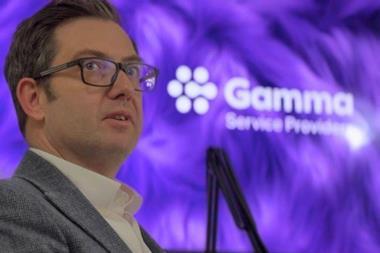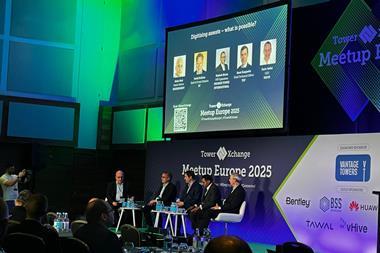- AI data cloud innovator Snowflake led a panel considering the most effective telco approach to AI, with practical considerations to the fore for operators BT, Telia, and Zayo, backed by vendors Amdocs and Ericsson.
- Data fundamentals deemed essential to avoid ‘scaling a bigger mess’, while quick wins can open up the prospect of making AI self-funding and even a profit centre.
- AI showing potential to bridge telco skills gap, benefitting internal teams, customers, and new industry verticals.
- Collaboration framed as secret of success, with operators urged to emulate hyperscaler practices that ‘enabled the giants to become giants’.
- By maintaining focus on outputs, operators can avoid risk of AI-washing, while remaining well placed to ‘ride the wave’ as compelling use cases prove themselves.

A clear message emerged from both operators and vendors at the Disrupt or be Disrupted — the High Stakes Race to Become AI‑Focused roundtable at MWC, where they considered the unavoidable question of how to get to grips with the enormous potential presented by AI in telecoms.
The key word, when considering both challenges and opportunities, is pragmatism, and this needs to be applied across the technology, its commercial and operational applications, and AI’s position within the strategic direction of any operator.
Hosted by AI data cloud company Snowflake, industry leaders from Amdocs, BT, Ericsson, Telia, and Zayo considered how today’s AI revolution fits within the broader history of telecoms technology and market disruption.
Amongst the top takeaways is that it is up to those with the clearest understanding of AI in an organisation to ensure the foundations being laid have sturdiness and longevity.
It is also clear that to build these foundations, telcos need a laser focus on having the right data, so that financial rewards from firmly established “golden data sets” can start flowing quicker than many anticipate, and gather momentum.
Snowflake bringing the gang together
As moderator of the panel, Snowflake has links to the participants through its support for data collaboration, recognition of the key role of data strategy in delivering autonomous networks, and opening new digital markets for operators.
The vendor is continuing to build operator and industry relationships through the Snowflake Marketplace, where Amdocs is offering access to solutions for understanding and predicting customer experience and revenue assurance, BT is commercialising location‑based and traffic insights through its Active Intelligence anonymised mobile network data solutions, and Telia makes available its Crowd Insights market analysis tools.
Winning with AI: mastering the groundstrokes before attempting the smash
David Sedlock, Chief Data Officer at international infrastructure operator Zayo, noted that his business is in growth mode, and ramping up AI investment to support the expansion.
“We should be hiring 300–500 people for the skills and operations needed where we’re at, but we’re not going to do that. What we’re going to do is hire 30–50 people and use AI to then scale those individuals to make them feel like 300–500.”
Sedlock.

Gaining this ability to apply AI to support business growth has not come easily, and for Zayo is the reward for establishing foundational goals for the business’s data structure and following through to create “gold data sets”, according to Sedlock.
Dror Avrilingi, Head of QE, Data and AI Studios at Amdocs, agreed on the importance of selecting the right starting point in data. He said that, “if you want to solve a problem, fix the data first”, noting that the benefits of AI use cases can be realised much more quickly when data is properly structured and correct.
“It goes back to the infrastructure. It goes back to the data set.”
Avrilingi.
Moderating the conversation, Fawad Quereshi, Global Field CTO for Platform Adoption at Snowflake, likened the enthusiasm for leaping straight into AI deployments to his experience with a friend who asked to be taught table tennis. Keen to emulate moves he’d seen Qureshi execute, the friend wanted to skip the basics and straight away learn how to deliver a jumping smash.
But as it is with sport, so it is with technology — “when you’re just five minutes into the game, you need to set the foundations”, he noted.
Zayo Group: Sedlock turns a negative into a positive
Sedlock jokes that in his early days at Zayo he was nicknamed ‘Mr No’.

Coming into a business that had developed through dozens of acquisitions and was in the midst of streamlining its approach to markets across continents, his priority on joining in 2023 was creating a coherent strategy for operational integration, the use of data, and existing technology. When asked if AI would play a role, the answer was a firm ‘no’. “I could have got fired the second day on the job”, he jokes, but the ‘no’ was not a ‘never’, and he set about fixing the foundations to move towards a future ‘yes’.
“We have to start with the foundational capabilities and get the data in a structured way”, he said, stressing the importance of a single source of truth and high quality data for services that can be scaled, “If you start with what we had, which was non-standard, unstructured, and just a mess… then it’s just going to make a bigger mess”.
Sedlock also emphasised the importance of educating the senior leadership team, recognising the goals they are trying to achieve, and demonstrating that the journey to achieving that goal is not merely a matter of adding new tools.
Privately-held Zayo (owned by DigitalBridge and EQT) delivers wholesale and metro connectivity in North America (where it is the largest independent player, with over 16 million miles of fibre), and operates an extensive business across Europe (carved out as Zayo Europe, led by ex-Vodafone executives), as well as international subsea connectivity. AI is not only underpinning rising demand for its infrastructure, Sedlock said, but will also play a crucial role in ensuring the operator is ready and able to fulfil its expansive requirements (it bought Crown Castle’s fibre business for $4.5bn (€3.9bn) last year, for example, and is investing organically at comparable pace). Similar to North American peers like Lumen, Zayo boasts a multi-billion dollar AI and data centre connectivity revenue pipeline.
Moving fast to shift data-led change from cost to profit centre
Another key aspect of ensuring a structured and methodical approach to AI implementation is to recognise the limits of what can be done, and use early wins to establish management trust and recognition of value.
Zayo’s Sedlock noted how conscious he was that he was asking the company “for a whole bunch of money” for a transformation project that would take time to bear fruit, so he made a commitment to give something back from the start through lower costs, greater efficiency, and improved revenue — based on tactical use of data. “For the first two years, it was tens of millions of dollars we saved doing this”, he said. This approach gives “returns back while we’re focused on the foundation”.
Sedlock explained that in his early days with Zayo he established a prioritised “laundry list” of 30 to 40 projects he considered could benefit from the application of data science and machine learning. When tackling such a list, the first thing to be determined was whether there was a clear pathway to value — “if it doesn’t have a pathway to value in two to three weeks, then I punt and bring up the next thing on the list”, he explained.
This approach saw the first item on the list passed over, “but the next three or four took”, and a focus on addressing churn saw Sedlock’s team achieve $8m in savings within six weeks. Similarly, a revenue assurance priority generated savings of $4m within three weeks. Within three months, the initiative had changed “from a cost to a profit centre”
BT Active Intelligence: a Wiley approach to leveraging AI capabilities

A conscientious approach to spending what is effectively other people’s money can also be seen in the BT Active Intelligence mindset, according to its Managing Director Steve Wiley. The BT Group data science unit is building an analytics platform that transforms anonymised and aggregated mobile network data points into actionable insight. Enabling this capability started with embracing an agile development strategy and working on a ‘metered funding’ basis.
“We don’t ask for the big budget, we ask for a small amount”, said Wiley — noting that this was “a bit of a head scratcher” for senior executives when first presented to them. The approach, though, was clear: “we need ‘this much’ to get me ‘this far’, and if I can validate my hypotheses, I can validate my assumptions that this is good — then we can move forward”.
This approach ensures the most effective use of funds, according to the BT executive, and enables the team to more quickly adapt when something demonstrably is not working. “Working in that lean way means that you have the courage to be wrong”, he said.
“We made some investments. We looked at some new ideas on how we innovate our business… some of those ideas are matured to the point where we’re scaling. Others have gone to the point where we’re not going to invest anything. That’s perfectly normal.”
Wiley.
Wiley sees parallels between today’s evolution of AI and the development of the internet at the end of the 1990s, with excitement and fear in equal measure risking decision‑making paralysis. This needs to be overcome, and now, as then, he considers the way forward becomes clear when organisations recognise that engaging with the new technology has simply become “the cost of doing business”.
- Wiley’s decades of experience in financial services and fintech prior to bringing his innovation nous to BT are currently informing development of BT Active Intelligence. In creating the data and insights platform, the unit is acting as “a startup within”, leveraging major player scale and benefits while also having freedom “to test and learn and hypothesise how we can change things for customers”.
Avoiding the pitfalls of ‘starting gigantic’…
Zayo’s Sedlock has another piece of advice for introducing data‑led projects: “start small because… then you can do the really cool stuff”.
This strategy presents the opportunity to “get the win”, and generate impetus that can be carried into more complex projects. “Everybody starts coming to you asking ‘can you help me?’”, he says.
While his early achievements at Zayo involved comparatively simple applications that unlocked savings, more recent projects have included a focus on predictability, and applying this to financial performance.

This has enabled an early warning system that can accurately predict how a financial period will close, ahead of time, giving opportunity to identify and remedy issues in advance.
Anders Vestergren, Head of the Network Management Solution Area at Ericsson, agreed that not only is starting small an effective way forward, but also less risky. Some operators, keen to unlock the benefits of AI, may attempt too much with a single large solution intended to solve all problems, but this is “likely going to be obsolete by the time it works”, he warns.
“To me it’s about starting now, finding out, using what we have, and then [adapting] when we learn how this really should be used”, he said, noting that the history of technology has shown that those who “dug in and did real valuable things in the beginning… were the winners in the end”.
Implementing AI to serve your customer — and your people — better
To help AI deployments become more mainstream, Vestergren sees a role for vendors such as Ericsson to deliver solutions with open interfaces and structured data that make it easier for telcos to innovate.
Mats Axelsson, Director for Global Partnerships’ Business & Corporate Development at Telia, referenced the NorthStar programme undertaken by the Swedish operator and Ericsson that created a 5G and cloud innovation hub for service development.
Axelsson drives racing cars in his spare time, making him a self‑confessed “speed guy”, and he sees AI as a way to bring tailored products and services to customers much more quickly.
“If you have AI in the core, and in how you configure services, you can have an intent‑based network that ‘learns’ the customer behaviour, that ‘looks’ more or less in real time, and ‘creates’ new products or services as customers are using the network, instead of having a product [where] we’re trying to identify this manually, collect that data, and think about how to change [it].”
Axelsson.
Amdocs’ Avrilingi agrees that there is a great opportunity to open up markets through the application of AI.
“It’s a great opportunity for telecommunication to impact other verticals. They [can] say to other companies: ‘we can help you digitise your systems, we can help you use AI to do so’.”
Avrilingi.
Sreedhar Rao, Snowflake’s Global Telecom CTO, has previously flagged the potential for operators to leverage AI-driven solutions to expand their commercial reach, calling for them to become ‘BizCos’ as much as TechCos as they overhaul architectures to establish data as the foundation.
Creating value through collaboration — how the giants became giants
An essential contributor to AI‑enabled transformation will be collaboration, according to several panellists.
In Wiley’s view from BT, having the courage to collaborate within the technology sector is “where the giants became giants”.

This may go somewhat against the grain in the telco space, when the belief has been that it is better to develop solutions internally, but Wiley maintained that “there are many organisations that can help you go faster, and even if it’s your first small win, you might get there far quicker by collaborating with other people”.
Telia’s Axelsson agreed that looking for external partners can be of considerable value, going as far as to urge telcos not to assume they must build the use case internally, “we learned quite quickly that maybe you shouldn’t develop the use case yourself”. He added that collaboration is a key area where no‑code or low‑code solutions can shine, saying “there are so many suppliers that already have something that [means] you can build in a couple of hours”.
Axelsson noted that larger customers are encouraging Telia’s implementation of AI, with considerable interest in how it can be used to deliver services that make the most of 5G network slicing, security, and edge computing. “The reason is that our customers would like to focus on business value and applications, and not operating things”, he said.
Vodafone is an operator making headway with its implementation of a network architecture ready for leveraging AI, building on close relationships with hyperscaler partners, as outlined during an Analysys Mason AI in Telecoms webinar. During the discussion, Jon Penrose, Snowflake’s Head of Telecoms GTM, reflected that technology partners are critical in such situations to manage increasingly complex multi-partner environments that “can be repurposed into a decentralised or distributed modern data architecture, which supports modern ways of thinking around concepts like data-as-a-product”.
Focusing on outputs and riding the AI wave
While upbeat on the application of AI in telco, there was broad consensus on the panel that the technology may not be the answer to everything.
Reflecting on the dotcom boom and bust, BT’s Wiley sees parallels in the way that AI is currently dominating strategy, in part because companies are desperate to prove their relevance. There is, he says, an attitude that “we must have an AI product or solution”, but “you might not, actually”.
“You can get lost in the noise of ‘everything has to be an AI model, a large language model, a machine learning model’, but that just talks to what everybody here has said — it’s data. It’s a layer on top of your data that enables you to do something.”
Wiley.
Zayo’s Sedlock echoed Wiley’s view on the importance of remembering purpose and business needs, particularly as it remains to be seen where the most effective uses of AI technology will emerge. This focused, pragmatic approach will place operators in line to benefit when the most powerful use cases come to light.
“We don’t know who’s going to win the AI game or what all the best cases are, but it still comes back to us here (in technology and data) to support the business and the business needs. If you focus on that, and… the foundational capabilities that we then can explore and leverage, I think that’s the best use of [AI]. Then we’ll be able to ride the wave.”
Sedlock.
Topics
- AI/GenAI/ML (artificial intelligence, agentic, machine learning)
- Amdocs
- Anders Vestergren
- BT Group
- Collaboration
- Data
- Data science (analytics)
- David Sedlock
- DigitalBridge (Colony Capital)
- Dror Avrilingi
- Edge computing (MEC)
- EQT
- Ericsson
- Europe
- Events
- Eventwatch
- Fawad Qureshi
- Financial & Performance
- Industry Voice
- Infrawatch
- Jon Penrose
- Marketplace (exchange)
- Mats Axelsson
- Mobile World Congress (MWC/GSMA)
- North America
- Revenue assurance
- Rural Connectivity
- Snowflake
- Sreedhar Rao
- Steve Wiley
- Sweden
- Technology
- Telia



